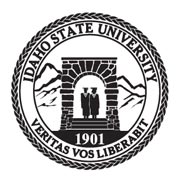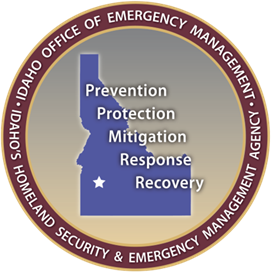- ▾ Other ShakeOuts ▾
- Alaska
- American Samoa
- Arizona
- British Columbia
- California
- Central U.S. (AL AR IA IL IN KS KY LA MO MS NE OH OK TN)
- CNMI
- Colorado
- Guam
- Hawaii
- Idaho
- Japan
- Montana
- Nevada
- New Mexico
- New Zealand
- NorthEast U.S. (CT MA ME NH NJ NY PA RI VT)
- Oregon
- Puerto Rico
- Quebec & Eastern Ontario
- SouthEast U.S. (DC DE FL GA MD NC SC VA WV)
- Texas
- Upper MidWest U.S. (MI MN ND SD WI)
- U.S. Virgin Islands
- Utah
- Washington State
- Wyoming
- Yukon
- Other Countries

Northern Idaho Earthquake Hazards
|
|
The Lewis and Clark Zone is a megashear in the earth’s crust, up to 30 miles wide, which cuts some 240 miles through north Idaho and northwestern Montana. Geologic studies have shown that the North American plate has been sheared along this zone repeatedly over the past billion years. The most obvious manifestation of the zone is a set of en echelon valleys that follow brittle fault zones across the grain of the northern Rocky Mountains from Helena through Missoula, Montana to Coeur d’Alene, Idaho . These valleys provided a natural transportation corridor through the mountains used in part by Lewis and Clark in 1806 and the Mullan Trail of the 1850s, and today by Interstate 90.
Along the Lewis and Clark Zone in Idaho, many mining-related seismic events, called rockbursts, have occurred. Rockbursts are spontaneous, violent fractures of rock in deep mines. The sizable magnitudes of some rockbursts, their dominant horizontal strain direction, along with their location within the Lewis and Clark Zone suggest that tectonic stress release may be involved in this mining-related seismicity.
The destructive 1935 magnitude 6. 25 and 6 Helena Valley earthquakes occurred near the eastern end of the Lewis and Clark Zone in Montana. The possibility that the western end of the zone is also capable of such large earthquakes, creates a considerable earthquake shaking hazard for the residents of Wallace, Kellogg, Coeur d’Alene, Rathdrum, Sandpoint and surrounding communities.
PARTICIPANTS
people are currently registered to participate in this year's ShakeOut Drill.
are from the
Northern Idaho area
Number of participants in each category
View names of
participants:






